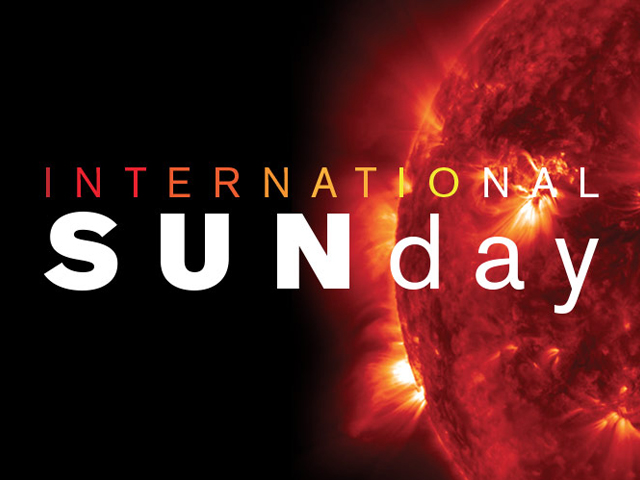See the Sun in a new light at Museum’s International SUNday event, June 24
For immediate release ‐ May 30, 2018
Contact: Jon Pishney, 919.707.8083. Images available upon request

(RALEIGH, N.C.) — Learn more about our amazing star, the Sun, when the North Carolina Museum of Natural Sciences hosts International SUNday on Sunday, June 24, noon–3:30 p.m. Safely view the Sun through a solar telescope, hear about unusual space weather and current solar research, and more. International SUNday is held annually on the Sunday nearest to the summer solstice, which is the day with the most hours of sunlight during the entire year, marking the beginning of summer in the Northern Hemisphere. The event is free.
Visitors can safely look at the Sun through the Museum’s special “Hydrogen-Alpha” telescope — which highlights fascinating surface features and solar storms — on the Rooftop Terrace of the Museum’s Nature Research Center from 1:30 to 3:30 p.m. (weather permitting). Visitors can also attend the following talks in the Museum’s SECU Daily Planet Theater:
“The Sun, Stars and Exoplanets” (12:30 p.m.)
In this presentation, Museum astronomer Rachel Smith will discuss the Sun — our home star — in the context of other stars in the Galaxy. Do stars play a role in the potential for life on the planets surrounding them? What factors are important in determining if a planetary system has a “habitable zone”? Smith will also discuss some of her current research observing forming stars across our Galaxy, and what the chemistry of these young stars can tell us about the formation of our solar system and exoplanets.
“The Sun: Common and Uncommon Events” (1:00 p.m.)
The Sun is our closest star and from a distance it seems unchanging. The Sun is not a calm object though. A close look at the surface gives it the impression of boiling soup. We can see hot gas trapped in giant magnetic loops arching over its surface. We also see occasional, highly energetic eruptions blast from its surface. The Sun interacts with the Earth in familiar ways, such as producing colorful auroras, and occasionally also produces dramatic far-reaching effects, such as the Quebec Blackout in 1989. In this talk, Museum astronomer Patrick Treuthardt will highlight some of the common and uncommon events produced by the Sun.
While clouds may limit observation of the Sun, the presentations will happen rain or shine, and the Museum’s Astronomy & Astrophysics Research Lab will be open beginning at noon, with astronomers and students available to talk with visitors about the Sun and current solar scientific exploration.

